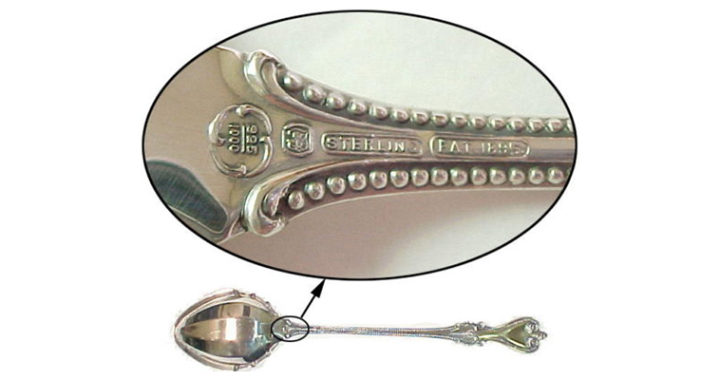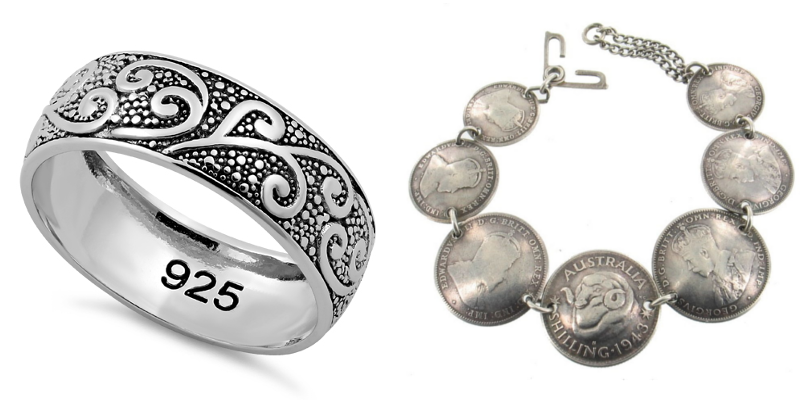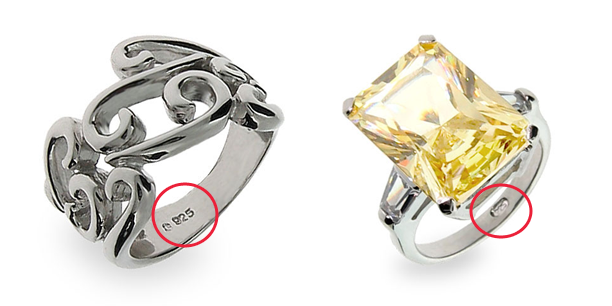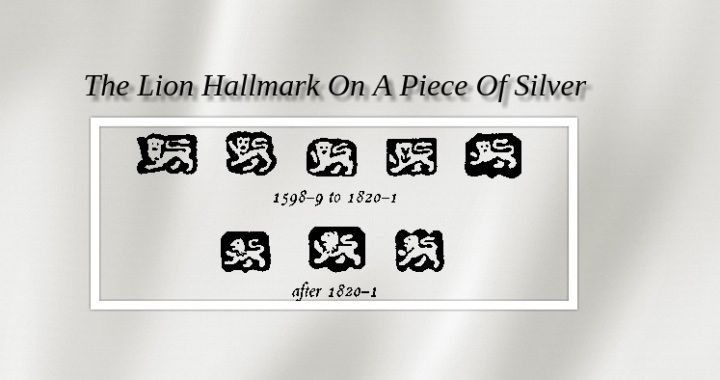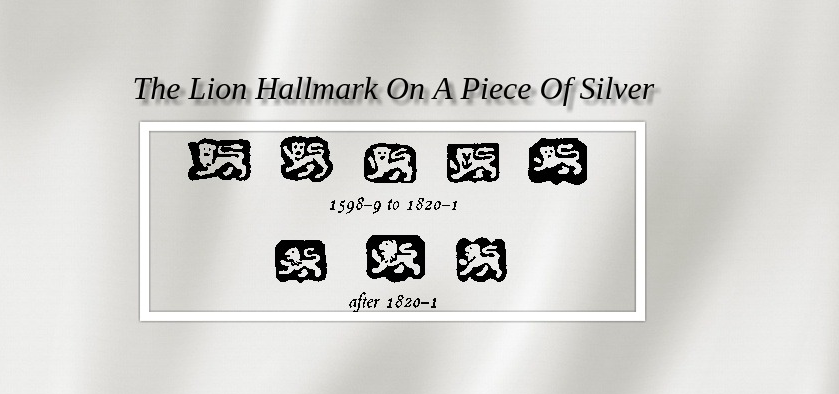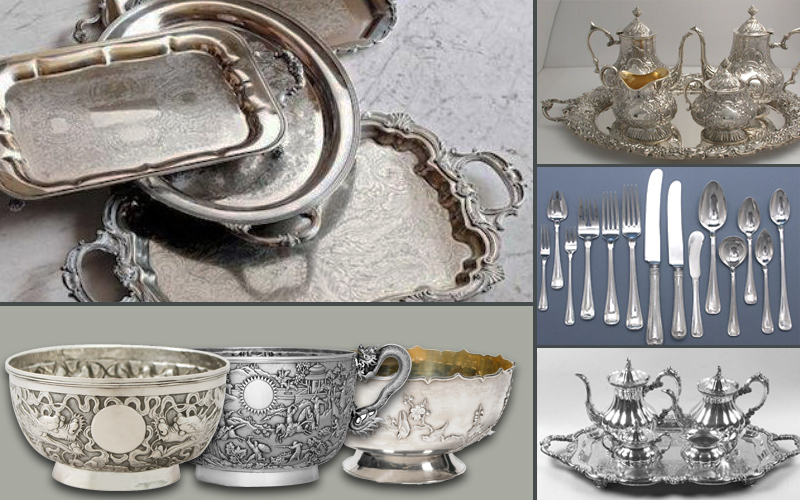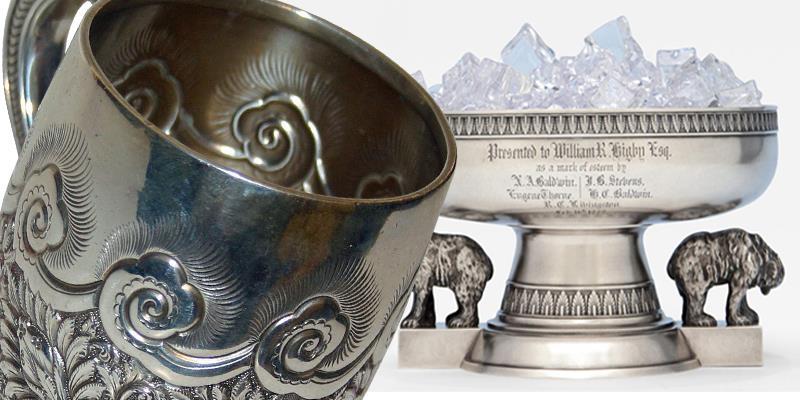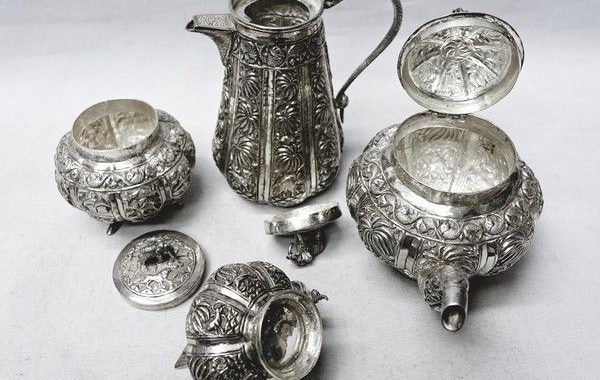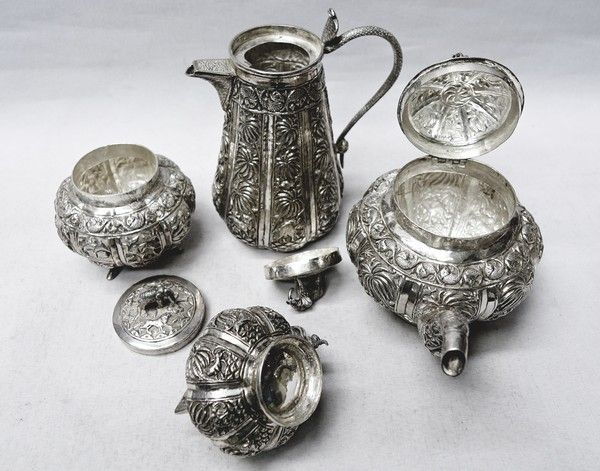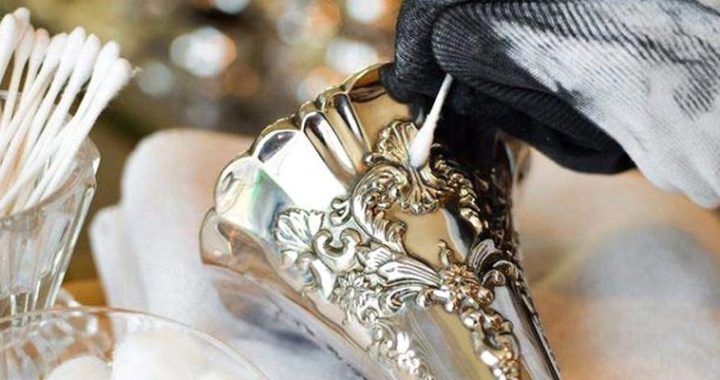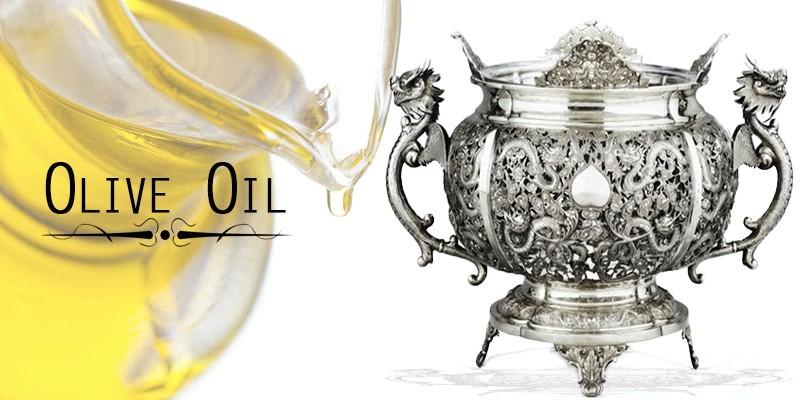Whether you are interested in buying a silver flatware set or looking to sell that old Antique silver tea set you never use, learning how to tell the difference between Sterling Silver or Silver plated items can be a great asset to you from getting the most money for your items to building a fine collection in your home.
Generally speaking, most silver pieces are embossed with a stamp or marker of some kind, but in some cases – such as with silver flatware, where every piece may not be marked – you’ll have to do a little detective work.
Here are a couple tips you can use to identify whether or not you are dealing with a piece of Sterling of Plated silver:
Silver Markings or “Hallmarks”
Surely, the simplest way to determine the grade of your silver is to look for silver markings left by the manufacturer. One of the most common markings is the imprint of the numbers “.925” (900 and 800 are also common). This indicates that your piece is 92.5% pure silver. Silver is often blended with 7.5% copper alloy. This gives the silver more strength than 100% pure, or fine silver.
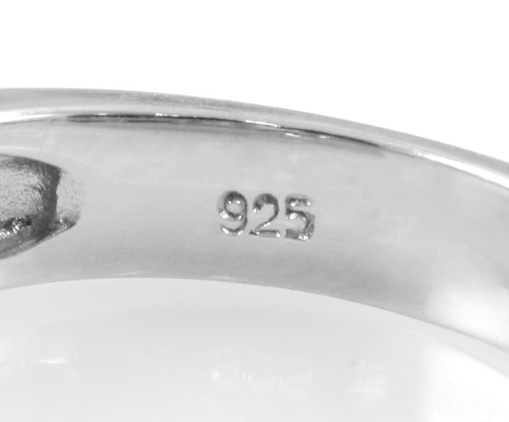
However, there are many different types of silver markers from, simply “Sterling” to various emblems or symbols used by specific manufacturers of precious silver items around the world which are helpful in identifying the year, country of origin, and rarity of the piece.
The Magnet Test
This is another fairly common way to test the purity of your silver – although I do not recommend using this method
alone. Silver is a non-ferrous material, meaning that it is not magnetic. For this test, the best tool to use is a rare-earth magnet which is also stronger than most magnets and won’t lose strength over time.

The Acid Test
This is an effective test, however if you are dealing with a piece that you think may be particularly valuable, you may want to try other methods of testing you silver first, as this may damage your silver slightly.
You can purchase a Silver Acid Test on many places online or at a jeweler’s store.
So, if there are no silver markings, it’s time to get down to work. You’ll want to put on a pair of appropriate gloves as this is a corrosive acid test, which can burn skin if you’re not careful.
You’ll need to make a small scratch somewhere inconspicuous with a metal file. This is to get to the underlying metal that is being tested. You’re trying to get beyond any silver plated layer.
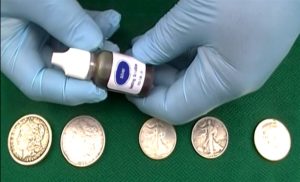
Note: Alternatively, to scratching your silver, you can also use a black stone plate (often included with Silver Acid Test kits. You can rub your silver on the plate so that it leaves a thick and fairly large deposit of silver on the stone. About one to one half of an inch thick.
Next apply the acid to the scratched area (or deposit on the plate). Your kit should include a color scale. You want to
identify the color change that occurs. This will determine the purity of the silver that the acid has come into contact with.
Generally speaking, you’re looking for:
Green (500)
Brown (800)
Darker Red (925)
Bright Red (Fine Silver)
Take care not to get acid on the non-scratched portion of your antique silver as this can tarnish the shine! Good luck with your testing! When in doubt, it’s always a great idea to consult a professional.
You can check out this video to know more about The Acid Test for silver markings:


